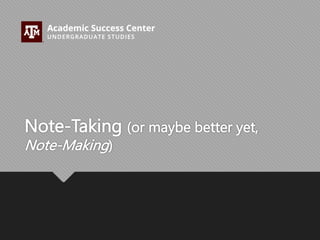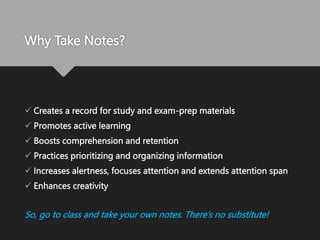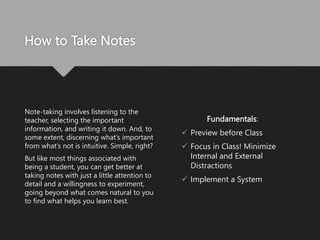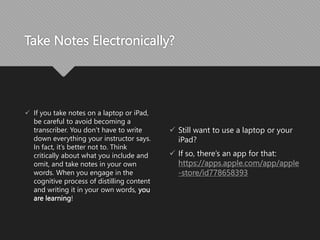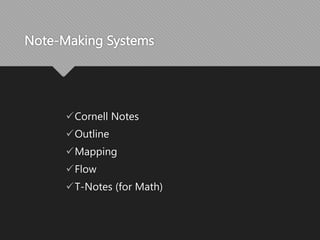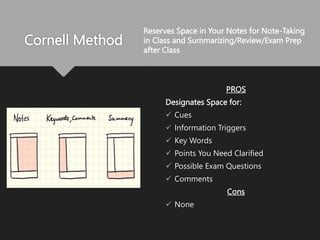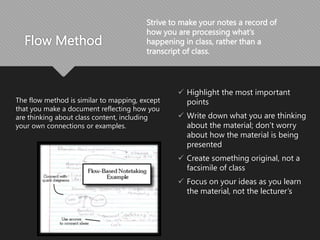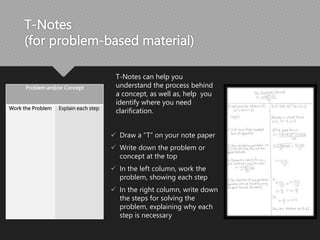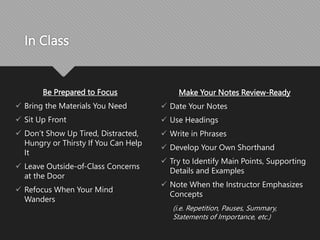This document provides tips and guidance for effective note-taking. It emphasizes that taking good notes is crucial for academic success as it promotes active learning, boosts comprehension and retention. It recommends previewing class materials beforehand, focusing without distractions during class, and implementing a note-taking system like Cornell Notes, Outlining, Mapping or T-Notes. The document also stresses reviewing notes after class, completing or revising them, and using them to prepare for exams. Taking notes in your own words rather than verbatim transcription is emphasized.
